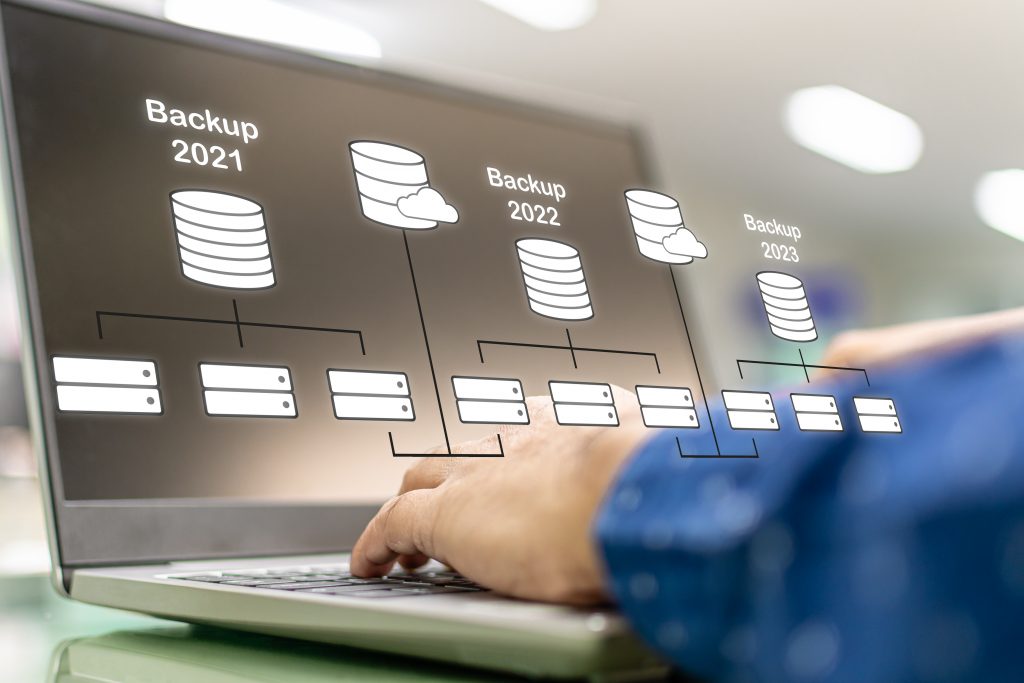
1. Introduction
Getting an accurate timeline for software development is a vital part of planning—it’s essential not just for properly orchestrating your resources, but also for establishing realistic expectations among your clients.
Here’s a quick highlight of what you should consider:
- The Roadmap to Development: Every single phase of the project timeline, from conducting business analysis and designing UX/UI through to coding and testing, carries immense importance.
- Dynamic Timeframes: The timeline is subject to changes depending on the complexity and scope of the project. A smaller business software may come together in as little as 2-2.5 months, while a larger, enterprise-level software can often require 10 months or even longer.
- Key Influencers: Project development time is greatly impacted by elements like the intricacy of project, namely functionality, number of screens, interfaces, and data migration.
- Adaptive Planning: The planning phase is dynamic in nature, allowing for adjustments in response to emerging risks, opportunities, or needs throughout the journey. Consistent fine-tuning is vital for successful project delivery.
This guide is designed as a tool to help bridge the gap between estimating time and planning the software development process, ensuring that your projects are delivered on time, on budget, and meet the expectations of clients. Consider it as your handy roadmap to carving an efficient, accurate software project development timeline for successful project outcomes.

2. How Long Does It Take to Build Your Software?
Spanning from several weeks to multiple years, the timeline of software development can greatly fluctuate. It’s a vivid landscape shaped by various influential factors.
“Grasping the fluid nature of software development timelines promotes effective strategic planning and fosters realistic expectations.”
2.1. By Project Size
Let’s promptly categorize software projects based on their typical timescales:
- Small-scale projects: These often involve the creation of simple applications or single-function software and take roughly 4-6 weeks to develop.
- Medium-scale projects: Catering to more complex functions or multiple features, these projects require around 3-7 months for completion.
- Large-scale projects: These are comprehensive software solutions teeming with intricate functions. They demand heightened security measures and can necessitate development periods ranging from 6 months to several years, or even longer.
In the forthcoming sections, we will dive deeper into the specific factors influencing the development timeline and explore various estimation methodologies.
2.2. By Industry
In reflecting on software development timelines across various industries, consider:
- Banking & Finance: Six to twelve months for moderate to complex projects due to heightened security and regulatory compliance needs.

- Healthcare: Up to 12 to 18 months due to system integration challenges, data security, and user-friendly interface creation.
- Retail: Approximately three to six months mainly for agile e-commerce applications responding to consumer trends.
- Manufacturing: Usually 18 – 24 months because of the extensive data migration and complex digitalization processes involved in transitioning to software-centric operations.
2.3. By Software Development Phase
Remember, these time frames are estimates – the precise timeline of your project could vary depending on the specifics of your software.
| Phase | Duration | Description |
|---|---|---|
| Planning & Analysis Phase | 2 weeks to 1 month | This stage typically lasts between 2 weeks to 1 month. Here, you’ll tackle defining the scope and objectives of your project, conducting feasibility assessments, and pinning down the necessary resources. The scale of your project and its complexity will determine the time range. |
| Requirements Definition Phase | 2-4 weeks | The aim here is to thoroughly compile and document business requirements. Considering various factors like the clarity of initial concepts, the number of contributors, and the complexity of the software, this phase could last from a few weeks to several months. |
| Design and Architecture Phase | 1 week to 5 weeks | This stage involves developing in-depth designs that will serve as the project’s blueprint. Things like UX and UI designs, architecture structures, and framework choices will be determined. Depending on your project’s specific needs, this phase could range from 1 week to 5 weeks. |
| Development Phase | 2 months to 1 year | This is the stage where coding comes into play. Owing to the size and nature of the project, this phase tends to be the most time-consuming – it could last from 2 months up to a year for larger, more complex projects. |
| Testing Phase | 3-6 weeks | This step is crucial to ensure faultless and optimum performance of the software. Depending on the number and severity of uncovered issues, this phase could last between 3 to 6 weeks. |
| Deployment Phase | Hours to days | This phase transmits the software to its final users. Dependant on the chosen deployment method and the software’s complexity, this phase could speed by in a few hours or take a few days to finish. |
| Maintenance and Support Phase | Ongoing | It’s important to note that a software’s lifecycle doesn’t end post-deployment. A continuous cycle of maintenance, updates, and enhancements based on user feedback and evolving market trends is essential. This process lasts as long as the software remains in use. |
2.4. By Software Complexity
Software complexity also noticeably impacts the development timeline. Simple software might be completed within a short span of months, while completing a complex project could span more than a year.
2.5. Adaptation And Flexibility
Being adaptable can also cause significant fluctuations in project timelines. Significant requirement or scope changes halfway through a project could potentially extend project duration. Such likelihoods should be accounted for when determining feasible timelines.
3. Factors Influencing Development Time
3.1. Project Complexity and Uniqueness
The complexity and uniqueness of a project significantly influence its development timeline. These factors can extend timeframes as developers:
- Handle interconnected tasks.
- Best utilize dynamic variables and intricate software architecture.
- Create and test unique code pathways that meet specific requirements.

3.2. Feature Set and Functionality Complexity
Feature sets and their complexity impact the development timeline by dictating:
- Each feature’s design, implementation, testing, and troubleshooting duration.
- The potential compromise between software simplicity (faster development) versus more complex features (longer development).
3.3. Screens and Interfaces
Screens and interfaces can also lengthen project timelines, depending on:
- The number and complexity of required screens.
- The additional time needed to design responsive interfaces for various device types.
- The continuous iterative design process based on user-feedback.
3.4. Data Migration
Data migration, with inherent complexities like data validation and transformation, can affect timescales by:
- Requiring careful planning for transitioning between systems.
- Taking additional time to verify transferred data for accuracy.
- Needing to adapt data to required formats prior to migration for optimal usability.
Easing these complexities with advanced strategies like automated testing can help accelerate the development timeline.
4. Estimation Methodologies
4.1. Expert Judgment
When it comes to developing a timeline for software development, clueing in on expert developers can lend a helping hand. Their experience and domain knowledge bring significant benefits.
Here’s what to keep in mind:
- Your experts have the chops to foresee challenges that may pop up, readily factoring in elements like testing and debugging which often get overlooked.
- Their domain knowledge provides them an upper hand. They understand the specific demands and challenges of your industry, which cuts down on time spent on research or dealing with trial and error.
- Leaning on expert judgment can create a realistic expectation of your timeline, helping avoid large divergencies from the initial estimates.

4.2. Historical Data and Parametric Estimation
Past experience and thus historical data can provide spot-on predictions for your software development timeline. Known as parametric estimation, this method offers certain advantages.
Here’s what you need to know:
- Pairing historical data with models like COCOMO provides a statistical method for making software development estimates.
- Even with the most accurate estimates, stay prepared for a few surprises. The volatile nature of software development calls for flexibility.
- Incorporate a contingency buffer for sudden obstacles or changes in requirements as part of your plan.
4.3. Use Case Points and Story Points
When it comes to agile projection methodologies, the focus shifts from specific timescales towards complexity of workloads and use case scenarios.
Here’s why it matters:
- Agile projection breaks down tasks based on relative complexity into manageable ‘use cases’, removing the pressures of specific deadlines.
- Complexity metrics help identify tasks demanding the most time and resources.
- Use cases flesh out the product’s functionality from the end-user’s perspective, giving you a clear view of user objectives and motivations.
5. Risk Buffers and Time-Eaters
5.1. Risk Buffers
Consider your journey of software development as a labyrinth. Here, buffers serve as life-savers in mitigating unforeseen hitches. They grant a safety cushion for typical project challenges, such as unexpected scope changes or glitches in dependency.
Let’s simplify it:
- Risk buffers stand as time cushions embedded within the project timeline to counteract unforeseen hitches.
- Properly apportion risk buffers by assessing potential risks and estimating time required for resolution.
- You can shield your timeline from abrupt scope extensions and other uncertainties through the formulation of robust buffer durations.

5.2. Time-Eaters
Competing with buffer time are “time-eaters“, factors that gnaw at your project timeline, inducing potential delays and shooting up costs. These culprits could be communication hurdles, limited team availability, or unforeseen technical issues.
Here’s how to tackle them:
- Preventive measures: Establish cogent communication protocols, allocate sufficient time for team members, and promote technical understanding to limit difficulties.
- Corrective measures: Retain flexibility to reassess timelines, shuffle resources, and streamline communication as required.
- Effectual control of time buffers and time-eaters is crucial for an attainable software development timeline.
In essence, incorporating these measures into your project management intensify the chances of wrapping up your software venture within its estimated timeline.
6. Outsourcing vs. In-House Development
Let’s look now at the comparison between outsourcing your project and handling it in-house.
| Development Approach | Advantages | Disadvantages |
|---|---|---|
| Outsourcing Partners |
|
|
| In-House Development Teams |
|
|
7. Transparency and Communication
Transparency and communication are vital in software project estimation, involving not only the technical team, but stakeholders and clients too. This promotes understanding and aligns everyone’s expectations for a successful project. Here are the key aspects:
Managing Expectations
- Understanding the project scope and objectives fully helps manage expectations effectively.
- Preparing for potential challenges during the project creates a realistic guide for the team and stakeholders.
- Balancing expectations with what is practically possible establishes credibility and trust in the process.
Involving Stakeholders
- Involving stakeholders and users in the development process refines the software design.
- Stakeholders’ involvement provides valuable insights to enhance the product quality and user-friendliness.
- Inclusive approach increases engagement and fosters a cooperative environment.
The ultimate goal of transparency in software estimation is to create a shared understanding of the project and its complexities. This promotes efficient transitions, prompt adjustments, and the successful completion of the project.
8. Wrapping up for Software Development Timeline
Let’s bring it all together:
- An effective project timeline is the result of thorough assessment of factors such as the project’s complexity, its features, interfaces involved, and data migration needs. By analyzing these elements from the start, your project timeline prediction will be more precise.
- When attempting to estimate the timeline, a variety of methodologies can come into play. Techniques like expert judgment, analysis of historical data, Use Case Points (UCP), as well as Agile story points, could greatly assist in detailing your project’s timeline.
- Common practices like code checking, testing, risk buffer periods and client feedback collection are invaluable. Aligning them with your project management strategies can further solidify the accuracy of your timeline.
- The bedrock of successful software development lies in promoting a collaborative work culture, an appetite for continual learning and improvement, and excellent client engagement. These are not merely strategies, but ethos that should steer your project from start to finish.
Keep yourself updated with the current tech trends, and more so, relish the journey of software development—it’s not just about the end product, but also the lessons learned along the way.
Now, the ball’s in your court. How will you utilize these insights to fine-tune your software development process? We’re excited to learn about your approach!
Frequently Asked Questions
The choice of platform significantly affects how long the software development process will take to complete. Different platforms call for different technologies, skills, and frameworks, which influence the timeline. The more complex your platform, the longer the development may take. Furthermore, if your software needs to function on multiple platforms, it would require additional time for adaptation and testing.
The maintenance and support phase is commonly the longest phase in the software life cycle. It includes ongoing support, bug fixes, updates, and enhancements to ensure the long-term usability and performance of the software. It also involves addressing any issues or queries that surface post-deployment.
End-to-end testing is a strategy used to verify that the flow of an application—from start to finish—works as expected. It’s designed to mimic real-world scenarios, thereby validating the software’s reliability for the user. This type of testing plays a crucial role before the final deployment, which can add to the software development timeline.
User Acceptance Testing (UAT) is the final phase of software testing where the intended users try out the software to make sure it can handle the tasks it was designed to handle in real-life scenarios. This step is crucial to ensure the software meets its intended purpose and user requirements. It is a key factor in successful software development and deployment but requires time and careful planning.
Risk buffers refer to the additional time added into the project timeline to cater for potential risks and unforeseen delays, which are common in complex projects. While they can mitigate the impact of delays, they also lengthen the development timeline. Time-eaters refer to activities or issues that consume more time than initially estimated, like last-minute changes or bottleneck activities. Effectively managing these can drastically decrease the time it takes to develop your software.


